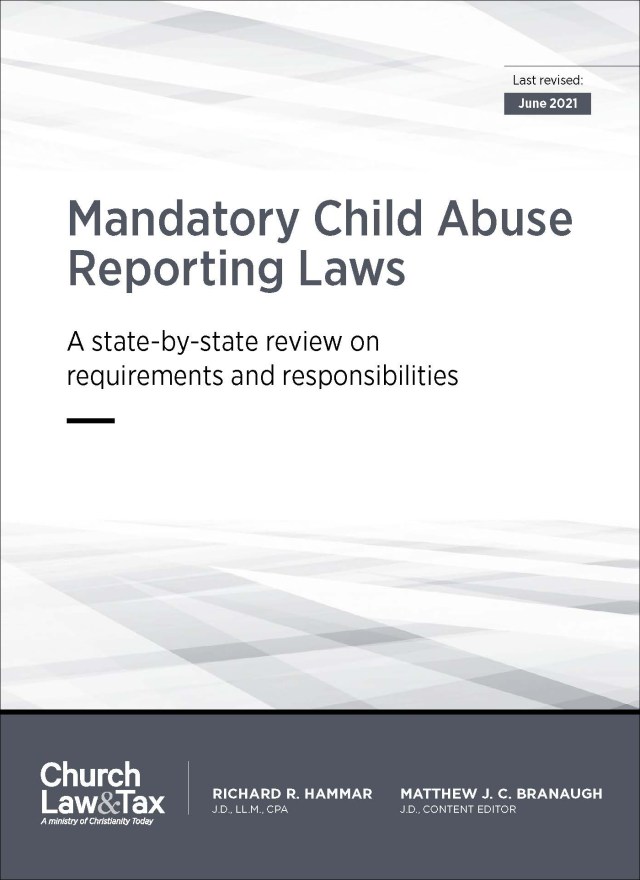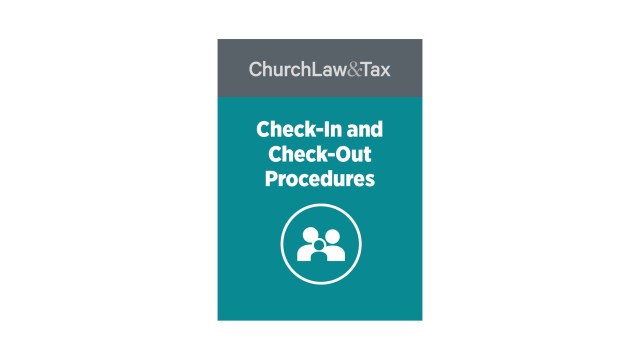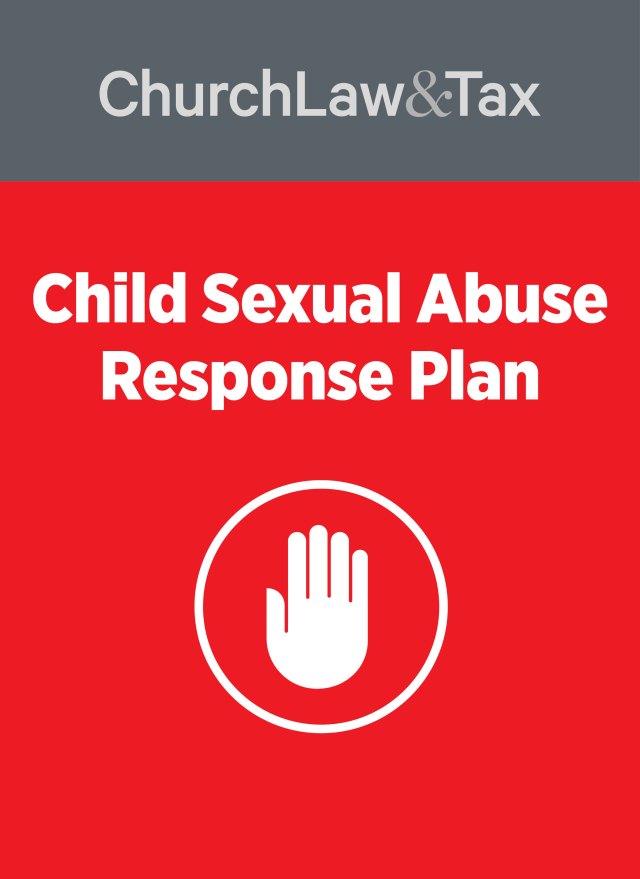• Key point: Minors who are sexually molested by church workers may not sue their church after the statute of limitations has expired. Generally, the statute of limitations begins to run on a minor’s 18th birthday. In some states the statute of limitations does not begin to run until an adult survivor of child sexual molestation “discovers” that he or she has experienced physical or emotional suffering as a result of the molestation. Other states do not recognize this so-called “discovery rule.”
• A federal court in Vermont ruled that an adult who claimed to have been sexually abused by a nun some 40 years earlier could sue a Catholic diocese for his alleged injuries. In 1992, an adult male (the plaintiff) began receiving intensive psychotherapy for what he alleges were severe emotional problems. As a result of this therapy, the plaintiff claims that he discovered he was the victim of “childhood sexual abuse, physical abuse and psychological abuse” allegedly occurring forty years ago when he was a resident of a church orphanage. The plaintiff filed a lawsuit in 1993 against “Sister Jane Doe,” the alleged perpetrator whose identity is yet unknown, and various religious organizations allegedly responsible for hiring and supervising Sister Jane Doe. The plaintiff alleged in his lawsuit that he has “used all due diligence, given the nature, extent, and severity of his psychological injuries and the circumstances of their infliction, to discover the fact that he has been injured by the sexual abuse.” The lawsuit listed the following five theories of liability against Sister Jane Doe: childhood sexual abuse, assault and battery, intentional infliction of emotional distress, negligent infliction of emotional distress, and invasion of privacy. In addition, the lawsuit claimed that the orphanage and Catholic diocese were liable for his injuries on the basis of negligence. The diocese urged the court to dismiss the case on the ground that the statute of limitations had expired long before. Under Vermont law, when a plaintiff sues to recover damages for injuries “suffered as a result of childhood sexual abuse,” the lawsuit must be brought within “six years of the act alleged to have caused the injury or condition, or six years of the time the victim discovered that the injury or condition was caused by that act, whichever period expires later.” The diocese claimed that since the alleged abuse occurred over forty years ago it is reasonable to assume that the plaintiff should have discovered the cause of his injuries long ago. It also argued that forcing it to defend against an alleged injury occurring so long ago violates the very purpose of a statute of limitations—relieving defendants of the difficult if not impossible task of defending against such claims. The court rejected these arguments, and ruled that the statute of limitations had not expired on any of the plaintiff’s claims (except for assault and battery, which the court deemed to be unrelated to childhood sexual abuse). The court observed that under Vermont law the test is when the plaintiff in fact discovered that his injuries were caused by childhood abuse, and not when he reasonably could have made this discovery.
The diocese also argued that forcing it to defend against an alleged injury occurring 40 years ago violates due process of law because there is no meaningful way to defend against a claim that is so old. The diocese would be without recourse to witnesses and records because of the passage of time. In rejecting this argument, the court observed: “[The diocese] provides no support for its theory that the prospect of an absence of records or witnesses violates a defendant’s constitutional due process rights. [It] has made no showing that it has no access to records or witnesses, only that it will be burdensome for it to attempt to locate records and witnesses. That burden alone does not implicate an individual’s due process rights.”
Finally, the court rejected the argument of the diocese that the plaintiff’s lawsuit was barred by the first amendment guaranty of religious freedom. Specifically, it argued that by permitting the plaintiff to sue the diocese, the court will be forced to determine what is acceptable behavior by a minister or other religious practitioner in a religious institution such as a church-run orphanage. The court agreed in part with this argument:
This argument has some merit. However, in this case it is unclear whether the actions taken by Sister Jane Doe had their origin in secular or religious activities. Tort claims which are based on purely secular activities do not invoke the protections of the [Constitution] because they are unrelated to the religious efforts of a cleric (for example, negligent operation of church van). But to the extent that a cleric’s actions are related to his or her religious endeavors, judicial review may foster excessive entanglement. Not having a sufficient factual basis for determining the circumstances surrounding Sister Jane Doe’s alleged misconduct, it is not clear to the Court that a first amendment defense would lie. Dismissal of the claims against her … would thus be premature at this stage.
Similarly, dismissal of plaintiff’s indirect and direct claims against [the diocese] is premature. Although the prohibitions of the first amendment may be implicated when a plaintiff seeks to hold a religious organization vicariously liable for wrongful conduct of its servant, it is not yet apparent whether the underlying claims against Sister Jane Doe are related to secular or religious activities, nor whether or to what extent the alleged activities were conducted within the scope of her employment at the orphanage. Thus, just as the claims against Sister Jane Doe must await further factual development, so must the claims of respondeat superior against [the diocese].
The plaintiff’s allegations of intentional and negligent conduct on the part of [the diocese] in hiring and supervising Sister Jane Doe and in fostering an environment in which sexual and physical abuse could occur give rise to serious constitutional concerns. Inquiry by a court or jury into the policies and practices of a religious organization in supervising and hiring clergy and other religious officials may foster excessive entanglement with religion. On the other hand, if hiring was done with knowledge that a prospective employee had perverted sexual proclivities, the institution might well be held accountable even though the hiring was part of the administration of a religious facility. Resolution of these issues must await further factual development.
What is the significance of this case to churches and denominational agencies? Consider the following: (1) It illustrates the possibility, in some states, of facing lawsuits for the alleged abuse of children occurring decades ago. According to this court, such a prospect does not violate due process of law. Of course, plaintiffs themselves will have a difficult time convincing skeptical juries that abuse occurred so long ago, particularly when the plaintiff cannot even identify the offender. (2) The court conceded that the first amendment guaranty of religious freedom may prevent the civil courts from deciding whether or not a religious institution is responsible on the basis of the “respondeat superior” doctrine for the acts of ministers or other religious practitioners occurring in the course of their religious duties. The respondeat superior doctrine imposes liability upon employers for the negligent acts of their employees committed within the scope of their employment. The court also conceded that a religious institution would not be liable under this theory for the acts of an employee that were not committed within the scope of his or her employment. (3) Perhaps most importantly, the court recognized that any attempt by a civil court to find a church or denominational agency liable for a minister’s sexual misconduct on the basis of “negligent hiring” or “negligent supervision” would “give rise to serious constitutional concerns”. Why? Because it would entangle the court in internal ecclesiastical determinations including the selection, training and fitness of clergy. Further proceedings in this case will be discussed in future issues of this newsletter. Barquin v. Roman Catholic Diocese, 839 F. Supp. 275 (D. Vt. 1993).
See Also: Seduction of Counselees and Church Members | Negligent Selection | Negligent Supervision | Negligence as a Basis for Liability – Defenses | Denominational Liability
© Copyright 1994, 1998 by Church Law & Tax Report. All rights reserved. This publication is designed to provide accurate and authoritative information in regard to the subject matter covered. It is provided with the understanding that the publisher is not engaged in rendering legal, accounting, or other professional service. If legal advice or other expert assistance is required, the services of a competent professional person should be sought. Church Law & Tax Report, PO Box 1098, Matthews, NC 28106. Reference Code: m67 m10 m86 c0594



